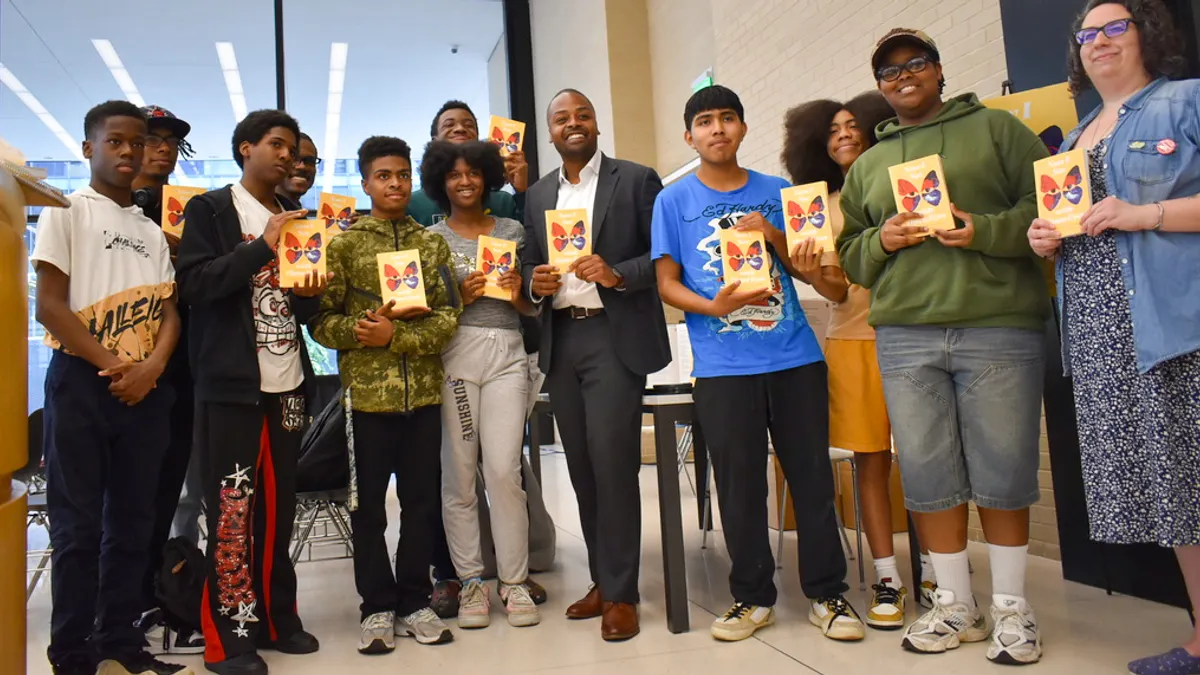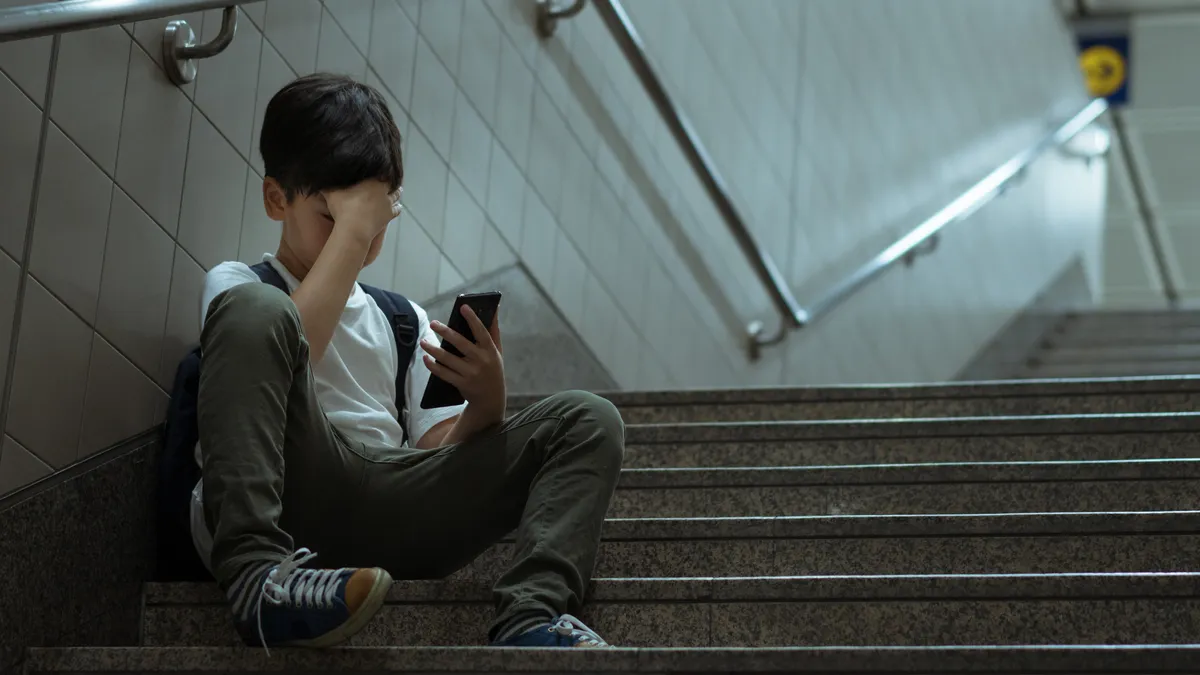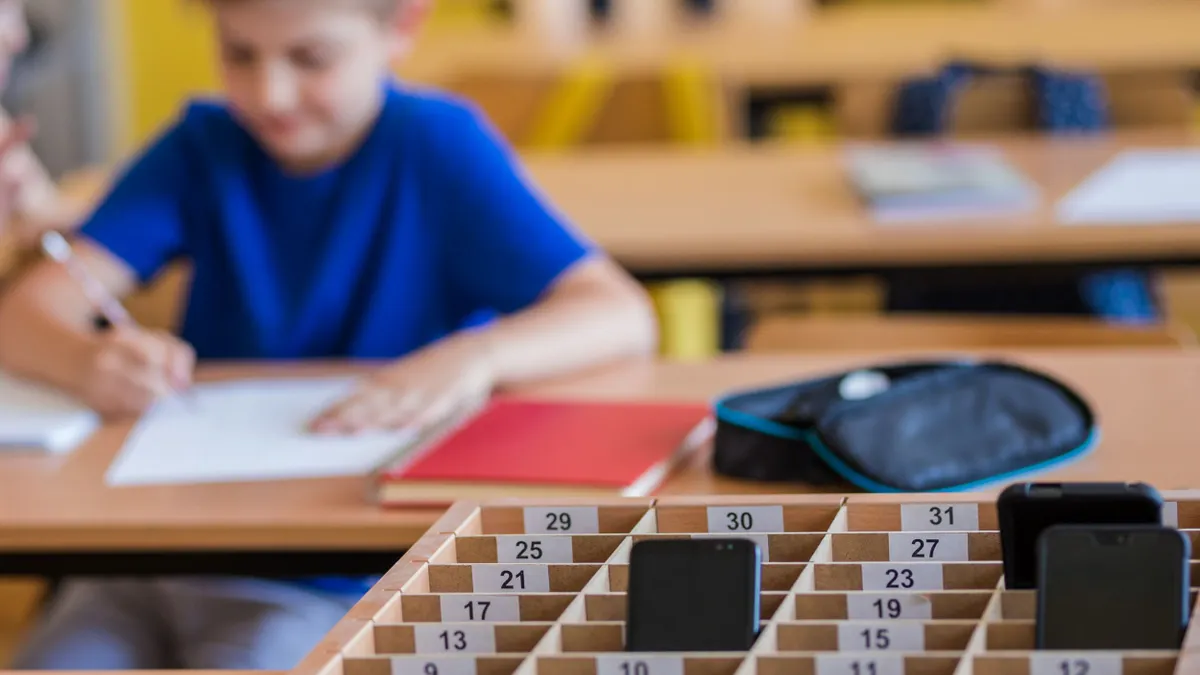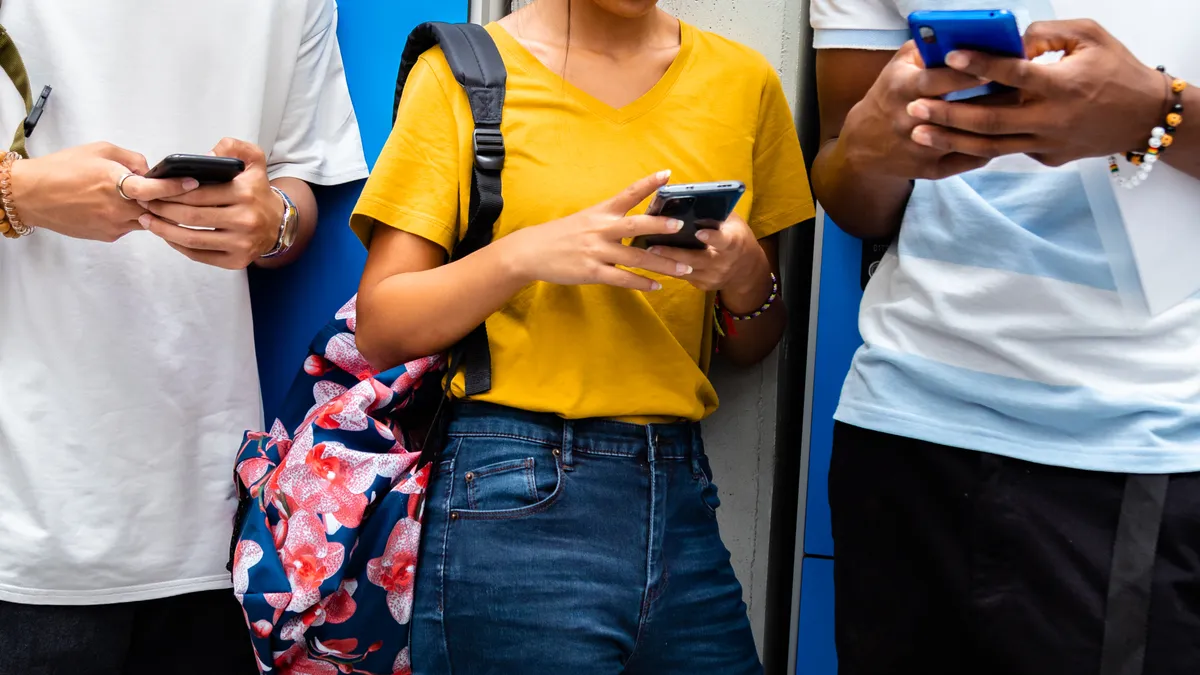Covering about 800 square miles with a student population projected at 78,000 for the coming school year, the Greenville County Schools is among South Carolina's largest districts. It also serves a population in which 51% of students qualify for free or reduced-price meals, 12% have special needs and around 15,000 are English learners.
Luckily, the district was also ahead of the curve on meeting students' needs prior to the onset of the novel coronavirus pandemic, according to Associate Superintendent for Academics Jeff McCoy. And the district is still using stakeholder input to tweak its approach ahead of the coming school year.
McCoy shared how the district was able to transition to e-learning relatively smoothly when schools shut down, how they've addressed grading and what he expects heading into the next academic year.
EDUCATION DIVE: When the pandemic shutdowns happened, how did the district make the transition to distance learning?
JEFF MCCOY: I wouldn't say it was a horrible transition compared to a lot of districts because we already have personalized learning in place for grades 3-12. I guess the thing that caught us off guard a little bit was the quickness of the switch. We were thinking we had a couple more days or a week before the governor was going to close schools, and that ended up happening on a Sunday afternoon for us.
When that happened, we kind of switched bases that afternoon, and we quickly came up with some e-learning templates for teachers and some guidance on e-learning and packets for K-2 students — and for 3-5 if they were at a school that hadn’t yet sent Chromebooks home. They were using them in school, but some had not sent them home.
We provided a lot of flexibility those first two weeks of e-learning. My team provided a lot of curricular resources and supports. And pretty much then after that, we moved fully into e-learning, with teachers designing the content and putting it in Google classroom. And my team took over designing the K-2 choice board that we used for the next six weeks until school's out.
You could ask a range of people what personalized learning is and get a lot of different answers. But what does that model mean for you all?
MCCOY: The model we’re working toward is that teachers can personalize the learning for the child in the sense of individualized instruction. With our curriculum and with our software programs we have available, a student knows or a teacher knows exactly when Johnny’s not mastered such-and-such a standard. And teachers can group students together to remediate or accelerate.
We were in the process and continue to have a process of really making that widespread across our district and get people to understand what that looks like. After talking to some teachers, I actually think that this probably furthered that a little bit. It was much easier for teachers in a lot of cases to personalize learning during the pandemic because they were able to connect one-on-one with kids on Google Meet, on the phone or through other methods of communication.
I regularly hear from districts that even with a good model already in place, teachers were prepared for tech-supported learning and not tech-dependent learning like e-learning. What are some of the things you've had to account for from a professional development standpoint and getting everyone comfortable with this?
MCCOY: We have been fortunate where, with our teachers, we focused heavily on technology the last 10 years, so we have actually a fairly high-tech teacher group. They were very good at using technology in their classroom.
I think with that shift online, though, nobody really had experience teaching online. Pretty much the week after we went fully e-learning, we started releasing a series of workshops in Google Classroom, Google Meet, how to design [e-learning] instruction and deliver that instruction. We had hundreds of teachers participating in that professional development every week, trying to learn and get up to speed.
It certainly wasn't perfect, and that's one of the things we are planning for right now this summer. We actually are launching a whole series on e-learning and how to design instruction, and putting some additional guidelines in place for our expectations when it comes to how teachers teach online when students are at home.
How did you account for low-income students in your district who lacked home access to an internet connection, or even just to a device?
MCCOY: So [lining up] the devices for us was pretty easy since we had devices [deployed] already in grades 3-12. We’re accelerating our refresh a little bit so we can push down older devices next year to K-2, so we'll have devices for everybody K-12.
We have Wi-Fi in the parking lots at all 100 of our school locations. We also have Wi-Fi on all of our buses, or the ones that actually went out to the communities and delivered food. So when the students were coming to pick up their lunches, [they] could bring their Chromebooks and access the internet from the bus. The way we set up Google Classroom was that kids could actually come download their assignments for the week, and then they didn't necessarily have to have internet at home to complete those assignments.
We tracked all of that, and actually even to our surprise — which is why we kind of accelerated our e-learning in May — 98.5% of those 3rd- through 12th-graders were connecting to the internet at least once a week.
When you initially planned out the curriculum model for grades 3-12 with the devices, was there a conscious decision around the “homework gap” to make sure, even before the pandemic happened, that students could just download the assignments at school and weren't dependent on internet at home for those?
MCCOY: Yes. That’s built into all of our trainings with Google Classroom. Our teachers, or most of our teachers — you had some who were a little caught off-guard because maybe they haven't kept up as much with the technology as others — have been using Google Classroom, and they have been assigning homework in Google Classroom that way already, as far as they need it offline for kids to be able to download.
I'd say we were in the middle of moving from that whole substitution worksheet level (of the SAMR model) more heavily into the more interactive kind of [tech-supplemented] work for students. So we've been focusing heavily on that. Our classrooms are very much out of the substitution stage. They're much more at the higher levels of transformational learning. I think in our online work [during the pandemic], because teachers were not used to it, it tended to be substitution at first. Now we're starting to move more across the transformational lines.
Another area that's been really challenging for a lot of districts is continuing to serve special education and English learners. What have been some of the challenges you’ve faced on that front and how have you addressed those?
MCCOY: We set up immediately that we expected our special education teachers to check in with our special education students the same amount of time per week they would normally do if they were face-to-face. So if they saw a kid five days a week in school, they were supposed to be checking in five days a week via phone, via email, Google Classroom — wherever that happened to be.
We're certainly looking at ways to improve that. For the most part, it was successful as far as the students were able to connect. Sometimes that's a challenge with younger kids, if their parents are still working and they don't have a cell phone and all that kind of stuff.
I think our ELL population was a little bit more difficult. We are looking to, in the fall, put in more of a digital curriculum and support of ELLs. That was one thing our ELL teachers struggled a little bit with, because we did not really have a digital curriculum for ELL that could support their language of development. That's something we're looking at this summer for implementation.
How have you addressed things like grading and exams?
MCCOY: We made the decision, since it was a huge transition for teachers and for students, to only do participation grades from March until the end of the year. Students were still turning in multiple assignments per week, and teachers were still expected to give feedback on those assignments, but at the end of the week they were supposed to give one participation grade based on the student's participation.
It could be that student was participating in Google Classroom, or they were calling the teacher for help and getting help. It was more about the engagement.
That was prior to us having those statistics about the internet, so we really weren't sure how many kids were getting the content. We have a much better picture of that now. Going into next year, if we have to do e-learning, we will be much better prepared and have our teachers even deliver some of those exams online. We didn't do any of that this past year with the online environment, but we are looking at and working with teachers on how do you build exams that you feel like kids can't Google the answer to or cheat. Real-world exams are more open-ended. It's still [about] showing what a kid knows.
As you get closer to the next school year and you're planning approaches for reopening, what are some of the things you're considering, especially with addressing the "COVID slide"?
MCCOY: What we have done so far — and, of course, opening next year is questionable — is we've actually designed a schedule that's got five different options on it for us to be in school one day a week, two days a week, four days a week or five days a week, with support for e-learning when kids are at home.
What I would say is that for next year, we have built into our curriculum maps already a review. Take math, for example — elementary math. We realize it probably is not as effective to review for a whole week and then start new content, so we've gone through our curriculum guides and we actually have paired the review with the actual new topic the kids are going to be learning. We will start the year with new content, but we'll be backfilling that with review content as it's relevant to the newer content they're learning. We just realized that was a more effective way to do it than try to stop school for six weeks and review for our students.







 Dive Awards
Dive Awards















